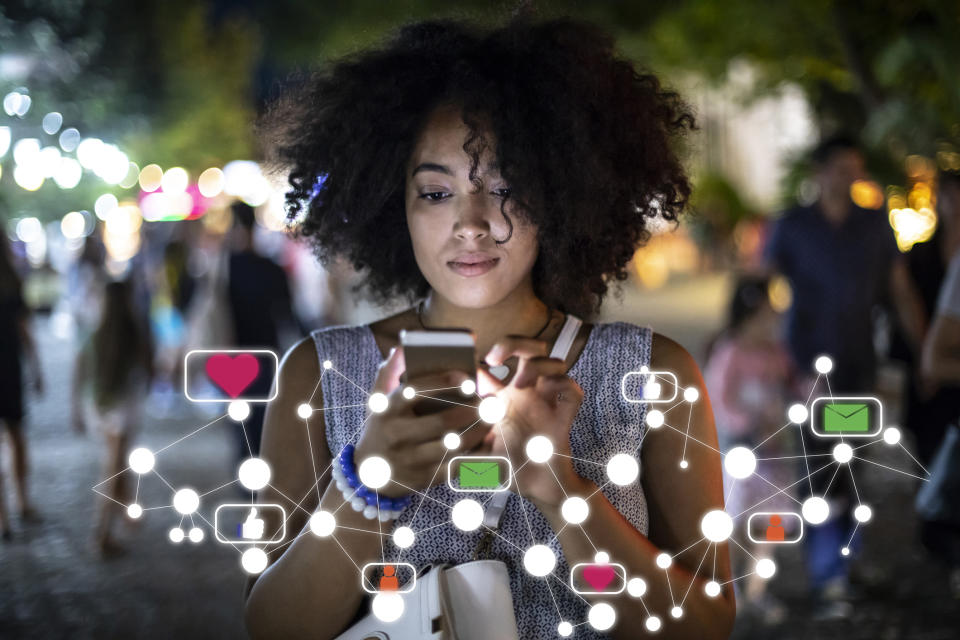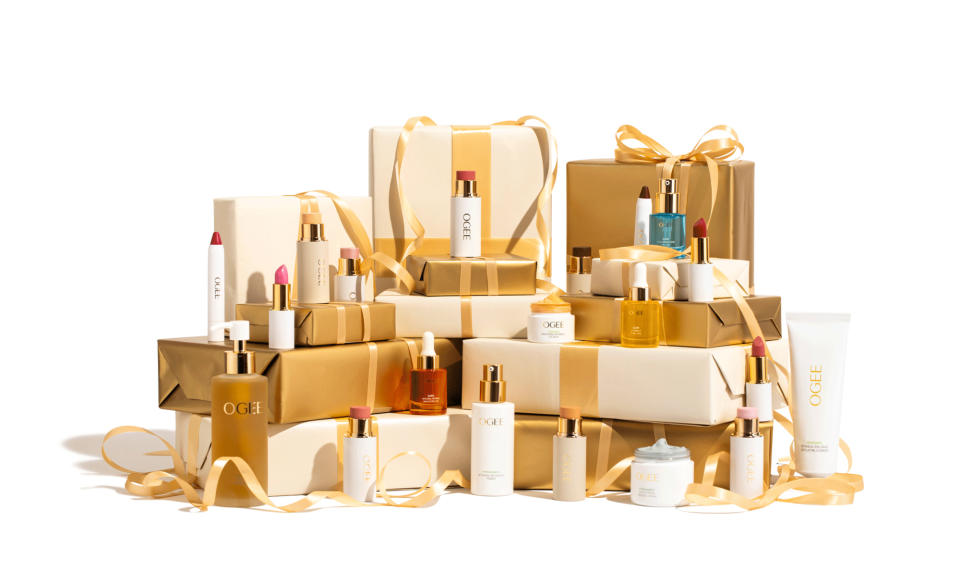The fashion world has switched to early adopter mode, and perhaps just in time.
The industry that took years to embrace e-commerce has changed its tune and is now moving quickly to keep up with technological change. That rush is perhaps most visible in digital marketing, where fashion, beauty and luxury brands are connecting with consumers.
More from WWD
Today, virtually every aspect of business relies on some form of technology, as evidenced by Friday’s tech crisis, which saw banks, airlines and corporations around the world hit by a software update.
And as the fashion world moves with technology, brands and retailers are quick to jump on the next big technological development, whether it’s the metaverse, augmented reality or blockchain.
Now there is talk of artificial intelligence, a development that not only opens up new possibilities but can also boost other technologies, placing it at the intersection of consumer and technology trends.
Machine intelligence is already addressing a range of marketing problems, from finding alternatives for ad targeting to developing strategy and creative content.
Why AI is Ruling the Marketing World
“We’re talking about a shift that gives individual marketers, creators and startups the tools to run billion-dollar brands at a fraction of the cost,” explains Massimiliano Tirocchi, chief marketing officer of Trafilea Tech E-Commerce Group, the consumer technology group behind shapewear brand Shapermint, lingerie line TrueKind, The Spa Dr. skincare and the BodCon conference.
Fashion and beauty are already using genAI to reduce the cost of photo production, he said. These systems can pump out changes or a smorgasbord of options in a range of formats in no time, not after reshoots or weeks of post-production and editing.
Major brands like Valentino, Moncler, Prada and more were early to explore the advertising and marketing powers of AI, while other brands, in the rush to embrace the advanced tools, have found themselves on bumpy ground. In 2023, there was a backlash against Levi’s, which was criticized after it botched the launch of a plan to test models created by genAI. Initially said to be a way to “increase the number and diversity” of models, it was later clarified that that statement did not accurately represent the program, leading to it being paused.
But that hasn’t stopped the AI fever. In fact, the technology continues to put new projects on the map, from Etro’s AI-generated campaign in early 2024 to European fashion group Mango’s first fully machine-generated campaign in July. Even tech supplier Motorola got into the fashion game with a fantasy runway show featuring generated models wearing styles inspired by its foldable smartphones.
According to McKinsey, genAI will add between $150 billion and $275 billion to fashion’s operating profits by 2030, with marketing being one of the key drivers. As these tools continue to evolve, they will become ubiquitous, fueling marketing at all levels.
“In the last 12 months alone, we’ve seen how creators, influencers, and startups can create scripts, subtitling styles, and video editing faster and more creatively without needing a team,” Tirocchi said. “They can even create entire videos, photoshoots, and graphics with genAI and the right prompting.”
Content is only part of the equation. AI can help marketers conduct sophisticated market research and sentiment analysis quickly, he added, enabling them to identify opportunities and conduct focus groups or interviews in days, not weeks.


Train the bots with internal or market data and they can quickly take on entire campaigns, from writing briefings to creating content, taking into account brand tone and specific target groups.
Of course, AI blunders and hallucinations still happen, so human participation and judgment are still needed. But Big Tech is busy fixing the problems and perfecting its machines.
Brands are ready for AI marketing
Tirocchi pointed to Google, Meta and TikTok as examples of major platforms rushing to build AI tools to help creators and advertisers generate content faster. And they’re coming at a time when brands are ready to embrace them.
Over the past few years, fashion and beauty have raised the bar on their tech experience by jumping on trends, testing new technology, and implementing new insights. In the process, they’ve seen a significant cycle of disruptive forces pushing and pulling on digital advertising and marketing.
Soon, the industry saw the metaverse hype boil over; gaming giants like Roblox joined the retail scene; panic ensued as Apple and Google made it harder to track users; TikTok faced a potential ban in the US; and an influencer-driven creator economy led to gonzo projections, with Goldman Sachs estimating its value at nearly half a trillion dollars by 2027.
“From the metaverse of 2020 to the continued politicization of TikTok and other social platforms, marketers understand that trends are changing faster than ever,” said Jen Jones, chief marketing officer of Commercetools, a tech-driven digital commerce platform serving clients from Sephora and NBCUniversal to High Snobiety.
TikTok is a big question mark now that lawmakers have issued an ultimatum: Find an American parent company or the app risks being removed from U.S. app stores.
Despite TikTok’s potential shutdown, Jones said brands aren’t rushing to opt out.
According to Jones, the opposite is happening.
She said she has seen “a huge shift in digital marketing dollars going to platforms like TikTok, despite the political challenges,” the spokesperson said.
On the platform, her focus is on longer videos (up to 60 minutes), which TikTok has begun testing. Jones called it “a treasure trove for digital marketing,” offering brands and retailers easy commerce integrations and a space for product promotions and discovery — with TikTok using its considerable AI powers to endlessly personalize feeds.
Every new twist and turn has made brands so much smarter. Now they want to apply that intelligence to where they connect with customers.
For many brands, that place is somewhere within ecosystems like Meta’s.
Big Tech’s Grand Vision for Adbots and GenAI
Understanding how to navigate what works best — and in what places or formats — can be a challenge, whether it’s on the web or within a single ecosystem. Consider Meta, where a whopping 3.2 billion people use one of its apps every day (up 7 percent from last year).
This massive audience is active across Instagram, Facebook, Messenger and WhatsApp, and is made up of organic shares and sponsored posts, as well as Facebook and Instagram Shops and video ads on Reels, the short-form video format that users now spend 50 percent more time with.
Last year, Meta released automated AI advertising tools called Advantage Plus. Since then, fashion and beauty brands in particular have jumped on it en masse to understand all the use cases, says Karin Tracy, head of industry, retail, fashion, beauty and luxury at Meta.


In some ways, Advantage Plus works like a marketing shortcut. Brands can use it to target an audience across the entire customer journey with a single, AI-driven campaign. This way, they don’t have to deal with fragmented ads with different goals, like prospecting, retargeting, and retention. And that’s not all.
“Think of it as an end-to-end solution, [with] everything — targeting, bidding, creative, everything automated through AI,” she explained. This could be key in an intensified market, as Chinese e-commerce apps like Temu and Shein buy up advertising space across the web, sending prices through the roof.
Return on ad spend is up 32 percent, Tracy said, and it’s up 9 percent on average and in cost-per-app actions when used with app campaigns. This machine learning-based approach can choose the most effective placements, putting better-performing creative in front of the most relevant audiences.
The system also features creative genAI tools that allow you to generate or enhance content, and reformat it if necessary.
“If you have one image that is one size, we can expand it to fit all of our different surfaces [or] “Text variations – meaning you put in one version of the text, and we can create dozens of versions of it, and the AI will find the best performing combinations of that text that get to the right people,” Tracy added.
That level of flexibility is important for brands like Laura Gellar of AS Beauty. Because it targets adult consumers looking for wrinkle creams and serums, it’s easy to assume that those ads belong on Facebook. But that’s not happening anytime soon, says Scott Kramer, vice president of growth at AS Beauty. Buyers can find that their needs change at different times.
“What makes AI so powerful is that as consumers evolve in their shopping habits, we don’t have to think, ‘You know what? We have an older demographic. Let’s just advertise on Facebook,’” he said. “Let’s let the AI decide, and that will change month over month, year over year … instead of us putting ourselves in a box.
“There may be women in their 30s who have spent more time in the sun, so they have a skin type that has the same concerns as those they see in our ads.”
AS Beauty was the first to dip a toe into Meta’s AI platform, spending 5 to 10 percent of its advertising and marketing budget on it last year. But satisfied with the results — and after an analysis prompted the company to run fewer search ads, freeing up resources — it increased spending to about 50 percent.
Likewise, clean beauty brand Ogee Beauty saw “immediate, huge results,” said Alex Stark, co-founder and chief marketing officer, so it also doubled down, calling it a “game changer.” Advantage Plus, in fact, was particularly powerful when paired with Shops, and the effect helped drive massive online growth for the brand of some 250 percent over the past year.
Stark may not know exactly what’s driving tech’s big AI push into marketing, but he suspects such tools have developed “probably because of iOS updates, the privacy changes, the cookieless future. I imagine they’re preparing us for that.”
“The uncertainty of the future is one of the reasons we want to continue to play on all these other platforms and in all these spaces,” he said.
The Best of WWD